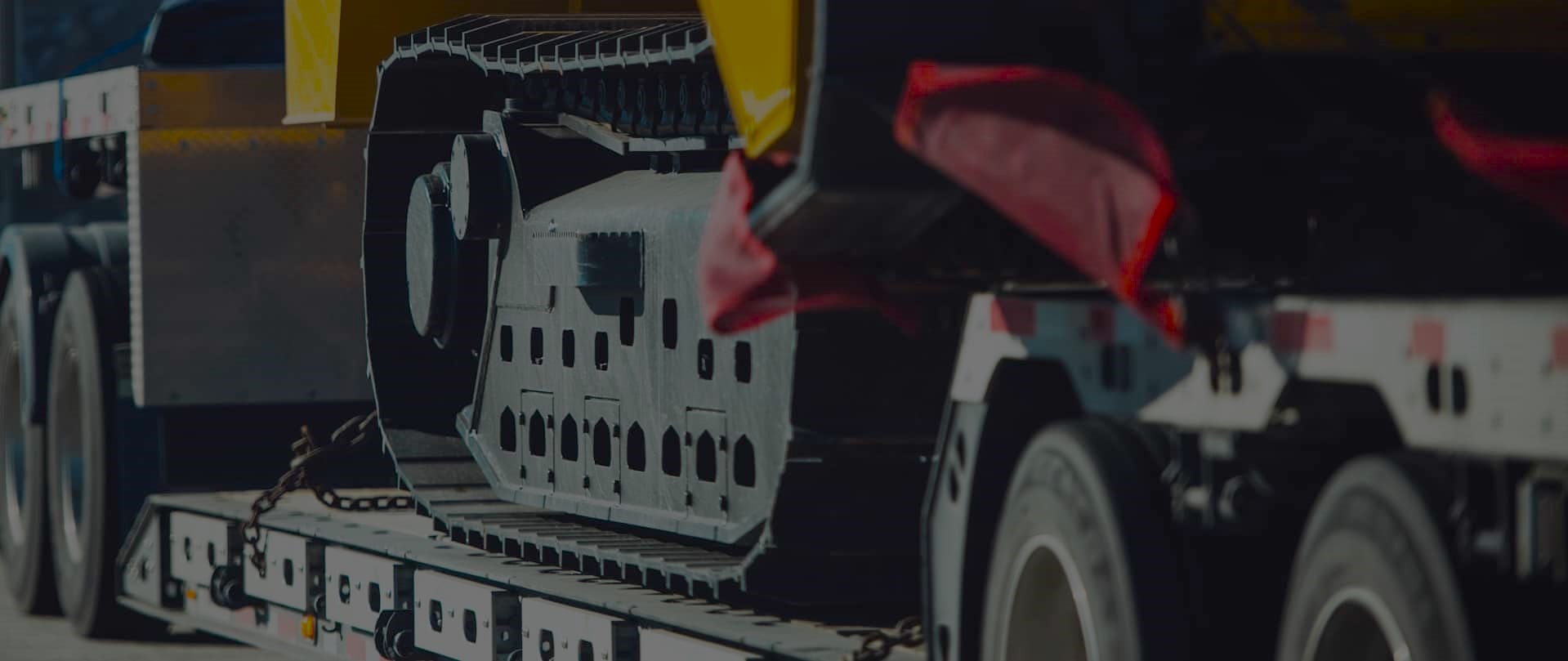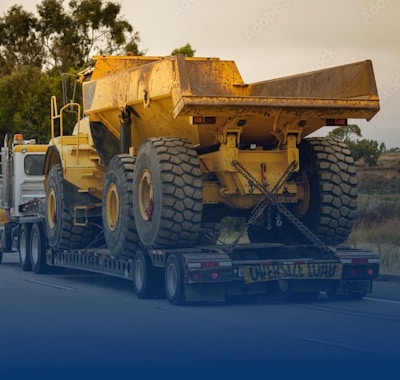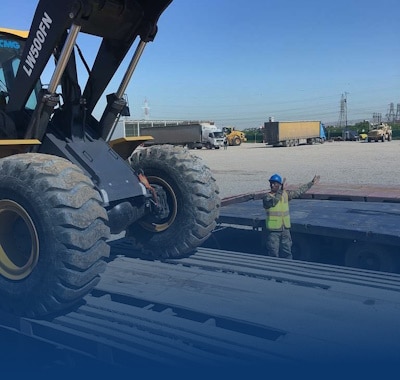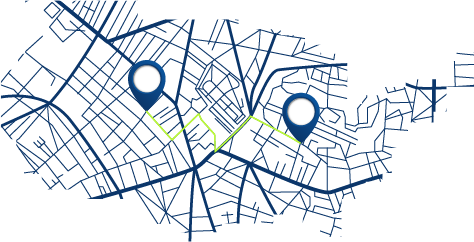Navigating West Coast Congestion on I-5 and Oversize Freight Planning
Freedom Heavy Haul can offer expedited Pickup and Delivery for any size shipment anywhere in the USA. Contact us today for No Hassle, No Pressure Pricing.
This guide gives practical steps for moving high-value, heavy loads along the Pacific spine. It explains how port slowdowns shape transit time, staging needs, and appointment reliability from ports to inland facilities across the nation.
Start with simple checks: read port conditions, estimate dwell time, and build contingency buffers. These actions protect schedules and budgets and make crane windows and dock slots more predictable.
We cover permits, escorts, and route options so you can lock paperwork and pilot cars before pickup. The playbook includes curfew rules, weekend windows, and alternate corridors that keep cargo moving when primary routes stack up.
Updates at the Columbia River crossing may boost reliability for heavy and long loads as projects advance. Use the steps here to turn coastal signals into inland forecasts and keep commitments to shippers, receivers, and project teams today.
Why West Coast congestion matters today for freight moving on I-5
When vessel queues spike, the impact is more than a shipping delay — it changes the whole pickup chain. Recent anchorage backlogs at Los Angeles, Long Beach, and Oakland reduce terminal throughput. That feeds into chassis scarcity, appointment shortage, and tighter yard capacity.
What recent port logjams mean for inland trucking
On February 18, more than 60 containerships anchored in San Pedro Bay while Oakland showed long queues. The Port of Los Angeles handled 835,516 TEU in January, up 3.6% year-over-year, signaling sustained volume pressure this year.
“Analysts called the situation a logjam — from vessel discharge to inland pickup — driven by high imports and limited warehouse space.”
How volumes, staffing, and space create cascading delays
High import volumes strain available storage. Reduced labor and sparse chassis availability extend terminal dwell times. These factors often add 24–72 hours to expected pickup windows.
Reading coastal metrics to forecast facility impacts
Track container availability, chassis street-time, and appointment backlogs to map likely dwell times at origin facilities. Confirm gate hours and equipment before committing to tight delivery promises.
- Expect yard operations near capacity during surges.
- Plan rolling ETAs that reflect current terminal conditions.
- Use off-peak moves and weekend windows when possible.
| Indicator | What it shows | Action |
|---|---|---|
| Anchorage counts | Terminal discharge pressure | Delay ETAs 24–72 hrs; confirm appointments |
| TEU throughput | Volume trend by month/year | Increase buffer days; pre-book chassis |
| Chassis availability | Drayage and first-mile capacity | Stagger pickups; plan drop vs. live-load |
| Appointment backlog | Terminal access reliability | Use rolling confirmations; notify receivers |
West Coast congestion on I-5 and oversize freight planning
Begin with a corridor clock: sync curfew windows, port gate hours, and receiver availability so large loads spend more time moving and less time waiting. Sequence each leg to match access windows and reduce risk of missing a restricted travel slot.
Build a time-and-route playbook: windows, staging, and alternate corridors
Pre-book staging near terminals and along the corridor. Secure lots with space for escorts and lifting gear so delays don’t force detours or canceled permits.
Develop an alternate-route matrix that uses parallel connectors like I-205 or SR-99 segments. Add pre-dawn or weekend moves where legal to cut exposure to peak delays.
- Lock pilot-car schedules to permit milestones and checkpoint ETAs.
- Block buffer hours per segment for urban interchanges and bad weather.
- Confirm appointments twice: 48 hours out and day-of.
| Action | Why it matters | How to apply |
|---|---|---|
| Corridor clock | Reduces idle time | Sequence legs by curfews and gate windows |
| Pre-book staging | Absorbs delays | Reserve lots near terminals and exits |
| Alternate routes | Maintains momentum | Map connectors and have turn-by-turn plans |
| Pilot coordination | Keeps crews aligned | Tie pilot times to permit windows |
Permits, clearances, and escorts: a practical how-to for oversize/overweight moves
Locking permit dates ahead of terminal pickups cuts risk when port waits or yard shortages force changes. Start permit submissions early for California, Oregon, and Washington so effective dates match vessel and receiver windows. Build slack into schedules for terminal delays.
Coordinating state permits and pilot cars
Secure pilot cars per each state threshold for length, width, height, and overhang. Brief crews on port-area traffic patterns to guide safe exits from terminals into compliant corridors.
Accounting for bridge spans and grades
Plan routes with current vertical clearances and weight postings. Note that the Interstate Bridge Replacement moves from frequent lift openings (about 250–480 per year) toward a fixed span with 116 ft clearance and a gentler grade; this will reduce delays once active.
Terminal readiness and contingency buffers
Confirm crane pads, wide-turn access, and safe waiting areas before arrival. Pre-identify emergency pull-offs and add weather or construction buffers to run sheets shared with drivers, pilots, permit agents, and receivers.
| Item | Why it matters | Action |
|---|---|---|
| State permits | Legal movement window | Submit early; align with port pickup |
| Pilot cars | Safe egress from terminals | Book by state rules; brief on local traffic |
| Bridge clearance | Route viability | Check postings; factor new fixed-span benefits |
| Yard readiness | Minimizes dwell | Verify pads, staging, and safe parking |
I-5 infrastructure changes to watch: the Interstate Bridge Replacement and freight mobility
A modern replacement bridge promises fewer stoppages and steadier travel for heavy lanes crossing the Columbia River. Designs emphasize earthquake resilience, a fixed-span clearance, and smoother grades that help trucks keep pace through the corridor.
What auxiliary lanes, safety shoulders, and improved interchanges mean for goods movement
Auxiliary lanes between closely spaced ramps create merge space and reduce stop-and-go bursts. This steadies speeds for heavy rigs and cuts extra escort hours.
Safety shoulders and clearer sight lines reduce minor incidents that can cause outsized delays. Predictable incidents mean firmer arrival windows for sensitive loads.
Fixed-span clearance, reduced grades, and multimodal shifts that can ease congestion
The planned fixed span with 116 ft clearance removes hundreds of yearly lift openings. That change alone improves schedule reliability through this choke point.
Lowering mainline grades toward 4% helps long loads hold momentum and reduces wear on equipment. Multimodal investments — such as light rail extensions — can shift local trips away from the highway and free capacity for commercial traffic.
- Track project milestones by year to align long-lead moves with openings and detours.
- Engage agencies early to reserve improved segments for your largest shipments.
- Expect national-level benefits as the corridor gains more consistent travel times for goods across the nation.
| Change | Benefit | Action |
|---|---|---|
| Auxiliary lanes | Smoother merges | Schedule peak moves through new segments |
| Fixed-span | Fewer stoppages | Plan tighter delivery windows |
| Reduced grades | Better momentum | Reduce buffer hours for heavy hauls |
Your next move on the West Coast corridor
, Turn port indicators into immediate actions: confirm pickup readiness, verify appointments, and add buffers for tight urban segments where congestion can compress schedules.
Lock staging and destination facilities with written confirmations of gate hours, crane time, and safe waiting areas. Prepare alternates for curfew slips or missed windows.
Sequence permits, escorts, and driver HOS so one setback—weather, construction, or terminal delays—does not trigger a chain reaction. Set a rolling ETA cadence with shippers and receivers at key mileposts.
Use a live route dashboard to flag work zones and incidents, then pivot to pre-approved alternates without waiting for extra sign-off. After delivery, capture actuals versus plan to reduce future delays and refine preferred windows.







